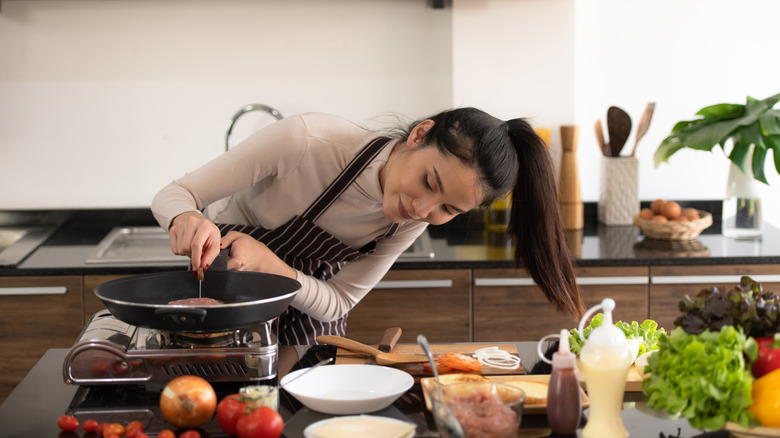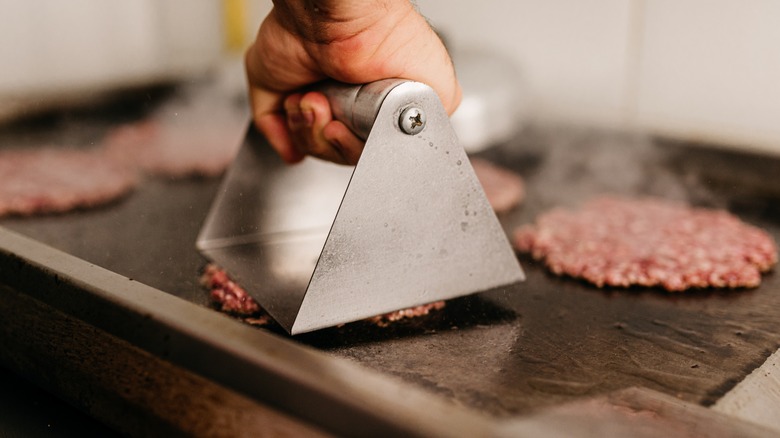Why Your Smashed Burgers Actually Should Be Sticking To The Pan
Hamburgers occupy a large space in culinary history. The concept of a flavored meat patty began as early as the Roman Empire. According to Museum Crush, a recipe called Isicia Omentata, found in an early Roman cookbook, called for ground meat, wine, pine nuts, and fish sauce to be formed into a patty. History traces the many places in the world where meat patties made their mark on society. One example is when the U.S. experienced an influx of German immigrants in the mid-19th century, giving rise to the Salisbury steak. But the 1904 World's Fair in St. Louis introduced Americans to the burger that we recognize today: a beef patty between two buns.
In the U.S., we've seen sliders, ridiculously expensive burgers made with Wagyu and truffles, burgers with meat so thick you can't bite all the way through, and a modern burger that tacks in the opposite direction: smashed burgers. The concept is simple: The patty is smashed into oblivion while cooking, resulting in a thin, flat patty bursting with caramelized flavor. The origin of the style itself is debated, but there is no doubt that the restaurant, Smashburger popularized it when it opened in 2007 and expanded rapidly throughout the U.S. and Canada. Whether enjoying smashed burgers at home or dining out, simply being thin isn't what makes these burgers so delicious. To get the perfect results, you'll need to break a basic cooking rule and make sure your food sticks to the pan.
Stick it to the pan
To get the desired brown, crispy crust on your burger patty that's unique to the smashed burger, you'll need to ... well, smash it down. According to Cook's Illustrated, using a spatula to do this isn't going to be enough. The magazine suggests really pressing the meat down with something much heavier, like a small iron pan or a meat press. If you don't press the meat down enough, the patty will shrink, resulting in a thicker, regular patty. Really get in there and smash so that every bit of that meat gets good and crispy. That patty should be sizzling and stuck if you've done it right. When it's done, grab that metal spatula and scrape every bit of browned goodness off the pan and onto the bun.
Serious Eats reminds us that, like any cooking method, smashed burgers are not fool-proof. You want browned meat, not burnt, so make sure the heat isn't too high. Furthermore, smashed burgers need to be cooked in a skillet ... you can imagine what would happen if you try the method on a grill. There is no limit to the topping options for a smashed burger. And with the thinner patties, why not double or triple them up?

